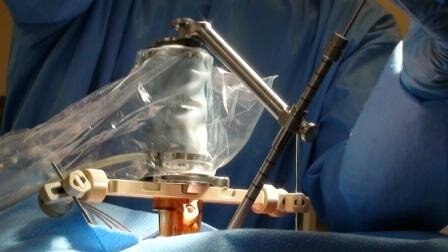Spine surgery is a delicate and hazardous procedure as it is in close proximity to the central nervous system, peripheral nerves and main blood vessels. Mazor Robotics’ SpineAssist provides accurate surgical guidance while leaving the actual surgical operation, such as cutting and drilling, in the surgeon’s hands. SpineAssist is a small robotic arm coupled with a workstation unit that allows surgeons to map out a patient's spinal anatomy in advance. The package also includes a clamping fixation device and special software to control the robot. The doctors begin the process of spinal surgery by simulating different implants by selecting length, diameter, orientation and the angle of insertion, all in 3-dimensions. At the start of the operation, the surgeon uploads the plan into the SpineAssist workstation connected both to the SpineAssist miniature robotic system and to the operation room C-Arm. The surgeon then mounts the SpineAssist platform, either Hover-T or Clamp and Bridge or Bed Mount or Bilateral Bed Mount Hover-T to the bony anatomy of the patient, creating a rigid platform for the SpineAssist device. Two fluoroscopic images are taken and transferred directly to the SpineAssist workstation from the C-Arm. Based on the images the SpineAssist performs a fully automatic image registration without the need for user intervention. The system quickly integrates in real-time the fluoroscopic images with the pre-operative plan. SpineAssist positions its arm in the trajectory planned by the surgeon, pinpointing the exact location of the planned implant. The surgeon drills and places the desired implant with 2.5 times more accuracy than with freehand, and with 51 times less radiation exposure. This procedure has had an effective recovery rate of more than 93% which is extremely excellent for the patient.
Dig

